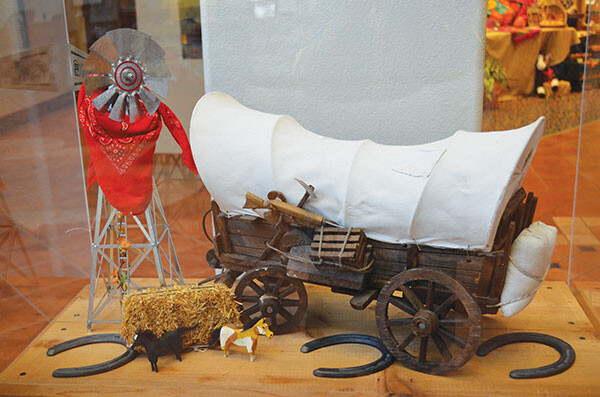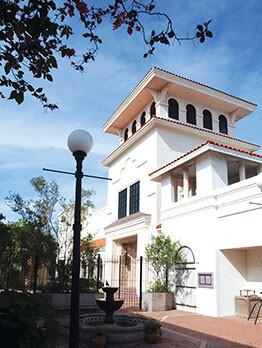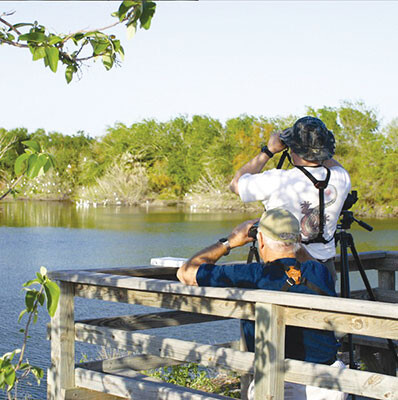 Edinburg, like many other Valley towns, was something quite small in the early 1900s, until Edinburg, then known as Chapin after the city’s founder, was selected as the new county seat in 1908. Official records, traveling by oxcart, made the journey from Hidalgo to Chapin to make the announcement.
Edinburg, like many other Valley towns, was something quite small in the early 1900s, until Edinburg, then known as Chapin after the city’s founder, was selected as the new county seat in 1908. Official records, traveling by oxcart, made the journey from Hidalgo to Chapin to make the announcement.
There is a little bit of history with Chapin and why the name was changed. Dennis Bangs Chapin was a former Hidalgo County Judge and land developer of the townsite. The town changed after Chapin shot a man named Oscar J. Rountree in a gunfight in a San Antonio saloon. Immediately following the gunfight, he was arrested and accused of murder—news that reached the citizens of Chapin. The city was renamed to Edinburg in 1911.
Shortly after being named county seat, the County Jail was built. The Museum of South Texas History is currently housed in the century-old Hidalgo County Jail. You can learn more about the city’s history, the railroad and regional culture by visiting the museum. 
The area, which was predominantly ranching until about 1915, experienced rapid development, growth, and prosperity, and can be attributed to John Closner and W. F. Sprague. You can find streets baring their names.
Many of the streets have their own history and were named after executives of the South Pacific Railroad in hopes that they would be build a line to the Rio Grande Valley. You will find streets with the names of Lovett, Peter, Loeb, Kuhn, Mahl, Stubbs and others. Streets such as Samano, Champion, Sprague, Closner, Chapin, Baker and Chavez pay tribute to local leaders.
Thousands gathered on January 11, 1927 when the train whistle blew as it arrived in Edinburg and the driving of the “golden spike” was held. The depot was operated out of a rail car until doors were opened on an official depot on August 1. The depot has been served by the San Antonio-Rio Grande Valley Railroad, Southern Pacific, and later the Missouri Pacific.
During the building boom in the 1920’s, a country club, a hospital and several schools were built. The Edinburg Golf course now stands where the Ebony Hills County Club (built in 1926), once stood.
It was also during this time that Edinburg made itself known for education. Edinburg Junior College was built between 1927 and 1929 that included the auditorium, administration building, science building, engineering building, library and the faculty club. The first class of the school graduated in 1929. Name changes occurred in 1933 and 1948 before being named Pan American University in 1951 after it became a state supported school. Today, the university carries the name of University of Texas – Rio Grande Valley and carries a wide range of curriculum including hospitality and medical degrees, among others.
 A chamber of commerce was officially chartered in 1932 and, after having several homes, is presently located at the historical Southern Pacific Railroad Depot. The chamber has helped the city grow with its organization of the Edinburg Community Hotel, a new campus for the university, attracting businesses such as Haggar Apparel to the city, gathering support for their activity center and renovations to historic buildings such as the Edinburg South Pacific Depot.
A chamber of commerce was officially chartered in 1932 and, after having several homes, is presently located at the historical Southern Pacific Railroad Depot. The chamber has helped the city grow with its organization of the Edinburg Community Hotel, a new campus for the university, attracting businesses such as Haggar Apparel to the city, gathering support for their activity center and renovations to historic buildings such as the Edinburg South Pacific Depot.
There are quite a few other places to see in the City of Edinburg. After visiting some of its historical places, events, entertainment, and food are a huge part of Edinburg. Events can usually be found year-round. Entertainment and events are also held at two prominent locations – The Bert Ogden Arena and the H-E-B Parks sports facility.
The city recognizes its musical heritage with their Tejano Walk of Fame (Located behind City Hall, 7th St., north of University Dr.). Every year during Hispanic Heritage Month, the city inducts Tejano stars and adds them to their walk of fame. The city also holds a Pioneer and Ranching Day that celebrate the heritage of south Texas and northeastern Mexico through music and hands-on activities. Edinburg also hosts the South Texas Film Festival, FridaFest, Edinburg Music Fest, the Night of Lights Parade, and many more events that add and celebrate the culture of the city.
If you want to experience some outdoor time while visiting Edinburg, pay a visit to the Edinburg Scenic Wetlands and World Birding Center. The center offers 40-acres of scenic wetlands in the middle of an urban landscape. The center receives visits from migratory birds, waterfowl, butterflies and over 13 species of ducks during the winter months.
For more information about Edinburg, visit expericenedinburg.com, edinburg.com, and mosthistory.org. Information on the World Birding Site in Edinburg, and others in the Rio Grande Valley, can be found at http://www.theworldbirdingcenter.com/edinburg.html.













